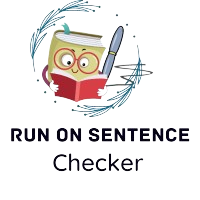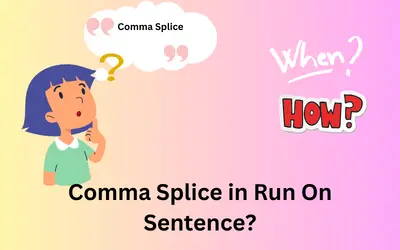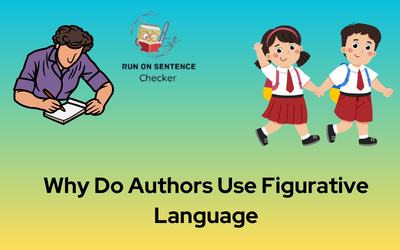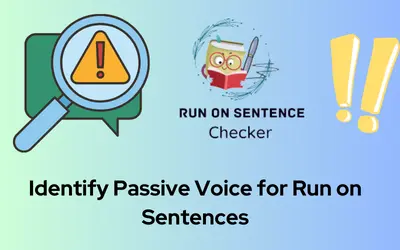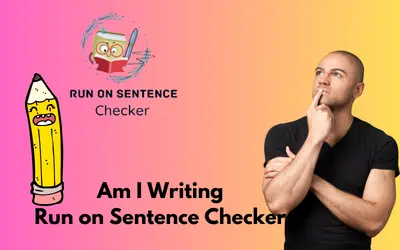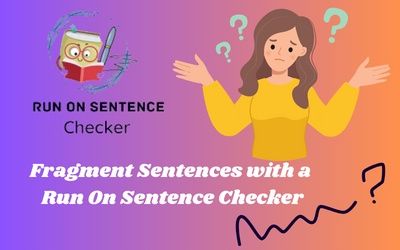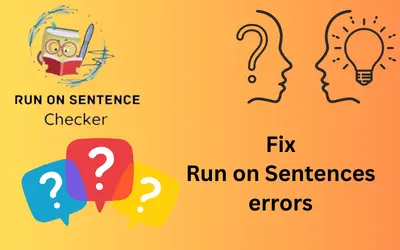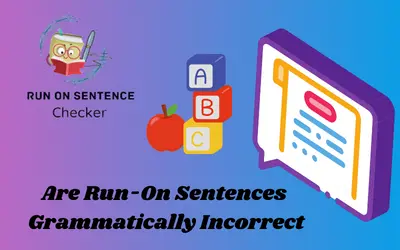
The subject “Are run-on sentences grammatically incorrect?” appears quite often in the sphere of linguistic minuend. This has led to several debates among linguistic enthusiasts and grammar experts.
This extensive research explores the details of grammar regulations, explaining how run-on sentences are formed and bringing to light what actually determines their possible validity. By the way,
If you want to check your document online you can use our tool Run On Sentence Checker which will fix all your errors and helps you in writing better results
What are Run-on Sentence Actually?
Run-on sentences, which due to the lack of proper punctuation or conjunctions are referred as blisters on canvas glamour writing remain a raise in educational circles. But a detailed view is necessary to understand their grammatical basis. Are they indubitably wrong, or were there situations in which their application is not just permissible but also appropriate from a stylistic point of view?
Are Run-On Sentences Grammatically Incorrect?
Run-on sentences are a type of grammar error that weakens the coherence and organisation of written communication. They are defined as the incorrect fusion of two or more separate clauses. This mistake happens when there aren’t enough conjunctions or punctuation marks to show where one concept ends and another begins. As an illustration, the statement “He enjoys playing the piano and practices every day” is a run-on because it improperly combines two distinct clauses.
Run-on sentences are grammatically wrong because they can be confusing to readers and make it difficult for them to understand what is being said. Effective communication may break down if pauses and transitions are not indicated clearly enough for readers to understand the intended meaning of a phrase.
Types of Run-on Sentences
There are 2 types of run on sentence which is based on the learning and having main approves to grammar
- Comma Splice
- Fused Sentences
Comma Splice
A comma splice is a grammatical error that occurs when two independent clauses (complete thoughts) are joined together with only a comma, without the appropriate conjunction or punctuation. This error can lead to confusion and impact the clarity of your writing.
For example:
Incorrect: “She loves reading, she often visits the library.”
Correct: “She loves reading, and she often visits the library.”
In this checking incorrect run on sentence is confirexample, the two independent clauses “She loves reading” and “She often visits the library” are joined by a comma without a coordinating conjunction, creating a comma splice. To correct this, you can use a coordinating conjunction like “and,” or you can separate the clauses into two sentences.
Fused Sentences
A fused sentence, also known as a run-on sentence of the type called a “comma splice,” occurs when two independent clauses are joined without any punctuation or conjunction. This error can lead to confusion and disrupt the flow of your writing.
Here’s an example of a fused sentence:
- Incorrect: “She loves to write she is passionate about storytelling.”
- Correct: “She loves to write. She is passionate about storytelling.”
In this example, the two independent clauses, “She loves to write” and “She is passionate about storytelling,” are fused together without proper punctuation or a conjunction.
To correct a fused sentence, you can use one of the following methods:
- Separate the independent clauses into two sentences: “She loves to write. She is passionate about storytelling.”
- Use a coordinating conjunction: “She loves to write, and she is passionate about storytelling.”
- Employ a semicolon: “She loves to write; she is passionate about storytelling.”
Understanding how run-on sentences degrade writing quality is essential to preserving linguistic accuracy and coherence. In order to fix run-on sentences, independent clauses should be adequately separated by using punctuation, such as commas, periods, or conjunctions. Grammarly are checking and best for the rules help authors make their sentences easier to grasp, which enhances the overall quality and effectiveness of their work.
Why Run On Sentence Checker is Bad for Grammar
Using run-on sentences, such as comma splices or fused sentences, is considered bad for grammar due to several reasons:
- Clarity and Comprehension: Run-on sentences can make it challenging for readers to follow and understand the intended meaning. Proper punctuation and sentence structure contribute to clarity in communication.
- Disrupted Flow: Run-on sentences disrupt the natural flow of writing. Readers may struggle to navigate through lengthy and improperly joined clauses, leading to a less enjoyable reading experience.
- Formal Writing Standards: In formal writing, adherence to grammar rules is crucial. Run-on sentences violate these standards and can create a negative impression, especially in academic, professional, or official documents.
- Impact on Professionalism: In professional settings, clear and concise communication is essential. The use of run-on sentences can diminish the perceived professionalism of your writing.
- Reader Engagement: Effective writing aims to engage the reader. Run-on sentences may distract readers from the content itself, focusing their attention on deciphering sentence structure instead.
- Failure to Convey Authoritative Tone: Proper grammar contributes to an authoritative and credible tone. The misuse of punctuation, like run-on sentences, can undermine the author’s perceived expertise and authority on a subject.
- Misinterpretation: Run-on sentences increase the risk of misinterpretation. Readers may assign unintended meanings to sentences with improper structure, leading to confusion
Essentially, accurate grammar use including sentence structure improves the quality writing. It promotes clear and effective communication, improves the reader’s perception of it. The elimination of the run-on sentences is a standard practice in language usage and reflects professionalism as well as mastery with regard to written communications.
Are Run-On Sentences Grammatically Incorrect?
As students navigate the myriad of written assignments, from essays to research papers, the mastery of correct grammar becomes a distinguishing factor. Clear and precise expression, devoid of grammatical errors, enhances the quality of written work. Professors and educators place considerable emphasis on well-structured, grammatically sound compositions, recognizing them as a testament to a student’s commitment to excellence.
Every written piece serves as a reflection of the student’s intellect and dedication to their studies. Correct grammar contributes to the creation of a positive academic impression. When a student consistently exhibits strong grammar skills, it not only reflects professionalism but also positions them as a serious and diligent scholar.
Conclusion
In conclusion, the question “Are Run-On Sentences grammatically incorrect?” unveils a complex yet fascinating exploration of grammar rules and stylistic choices. Embracing proper sentence structure not only enhances clarity but also elevates the overall quality of written communication.
Is a run-on sentence bad grammar?
Regardless of the sentence length, run-on sentences are inherently grammatically incorrect. A run-on sentence is characterized by the presence of two or more independent clauses that lack proper separation through a semicolon, period, or conjunction. For instance, consider the following example: “I love dogs, and I love to walk them.”
Why are run-on sentences problematic?
A run-on sentence is deficient in the appropriate punctuation to guide the reader on where to pause or to indicate the introduction of a new idea.
How do run-on sentences affect comprehension?
Run-on sentences can confuse readers, making it challenging to follow the intended meaning of a sentence or passage.
Is it acceptable to use run-on sentences in fiction?
In fiction, run-on sentences can be used for stylistic reasons, but authors must ensure they don’t compromise reader comprehension.
Should I use conjunctions to connect sentences?
Conjunctions are effective tools for connecting sentences, ensuring clarity and coherence in your writing.
Why run-on sentences are not okay in English?
Run-on sentences are considered incorrect due to either misused or missing punctuation. An example of a run-on sentence is: “I am a writer, I like to write novels.” In this instance, a run-on sentence emerges as it contains two independent clauses that are fused together without proper separation.
